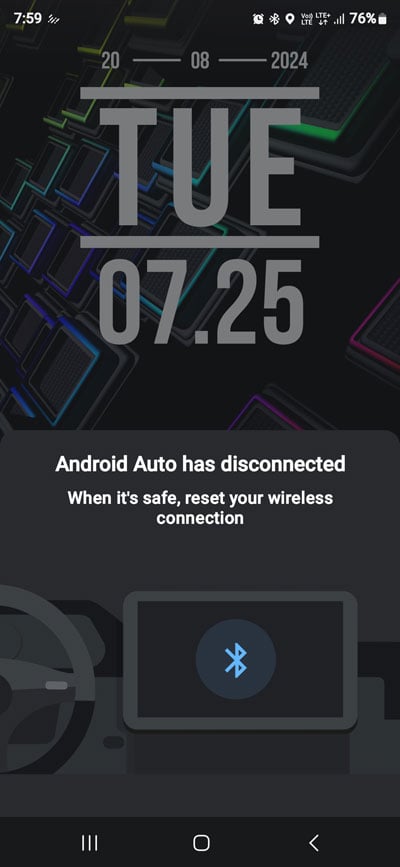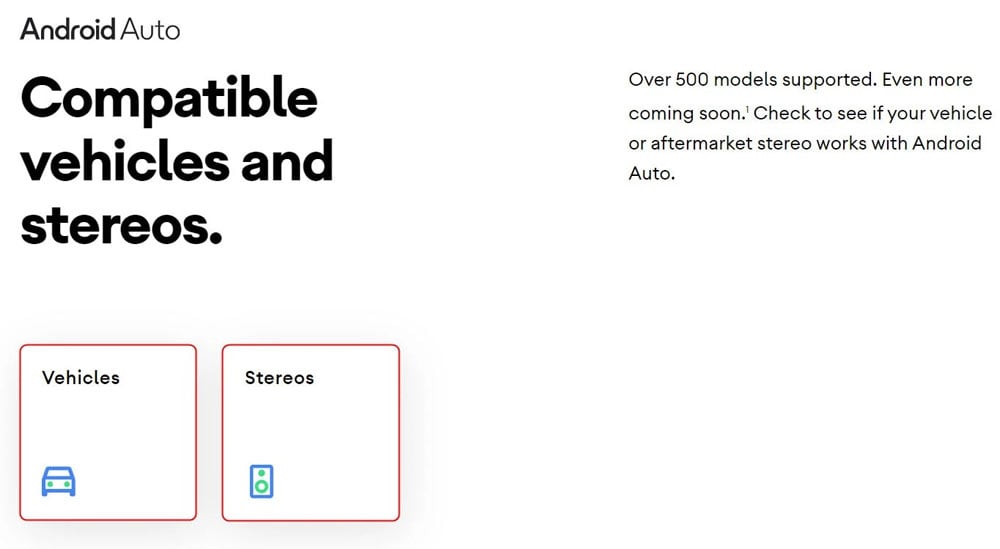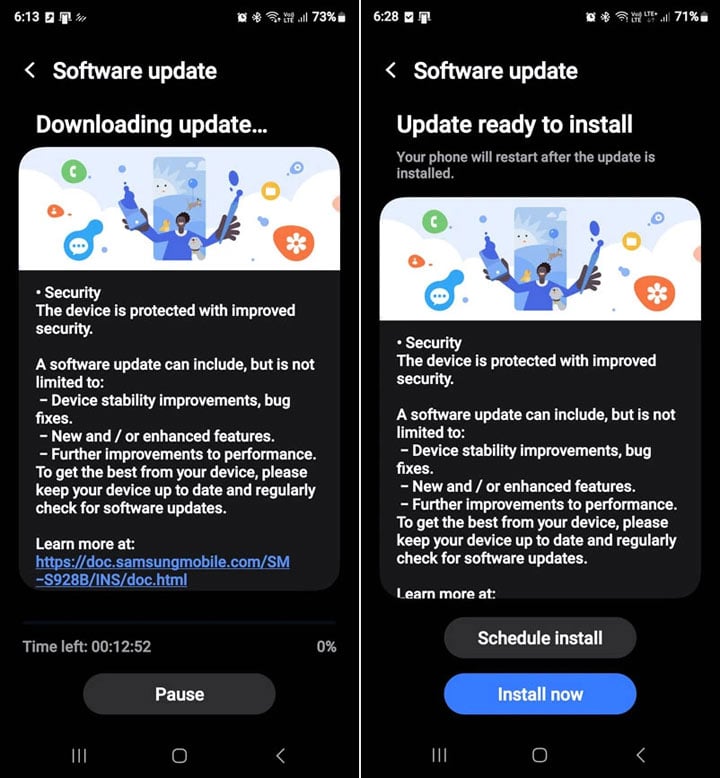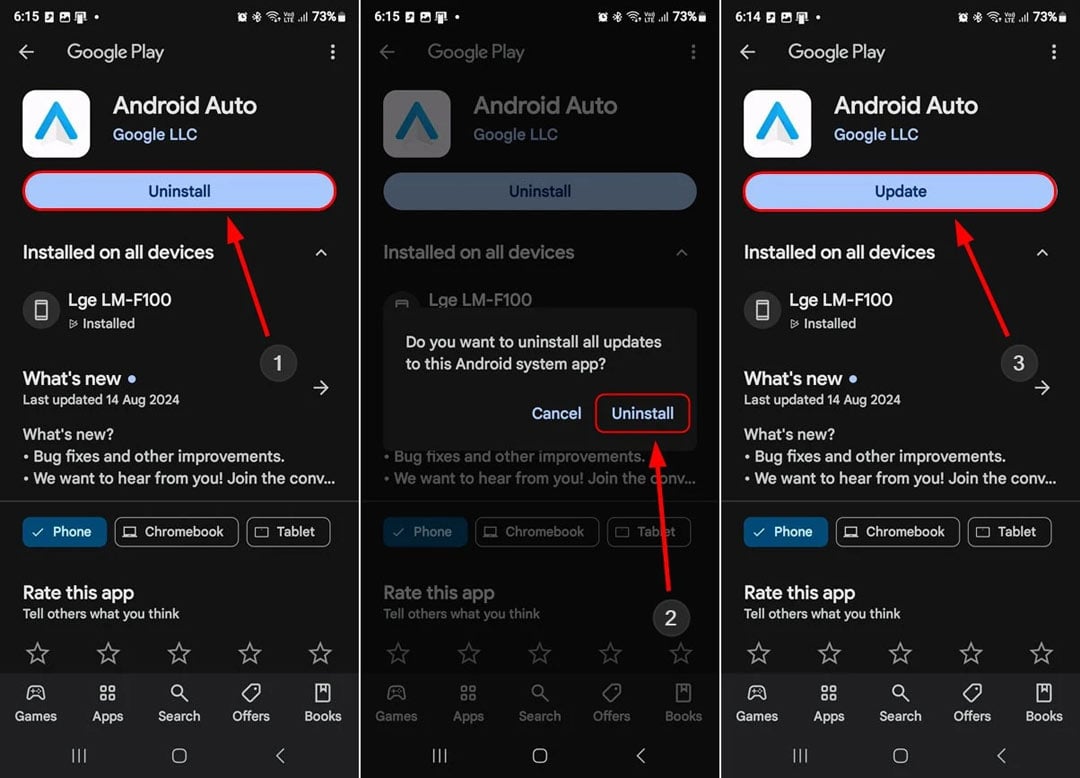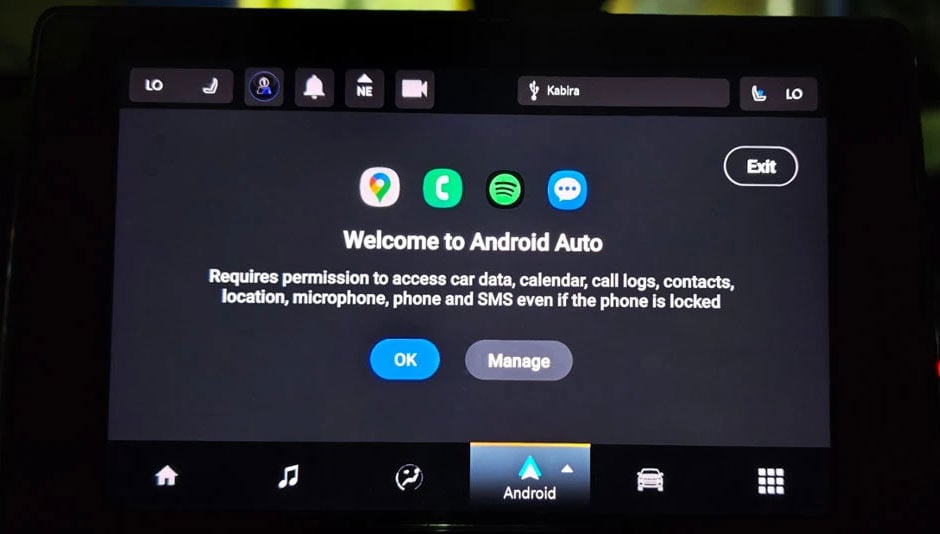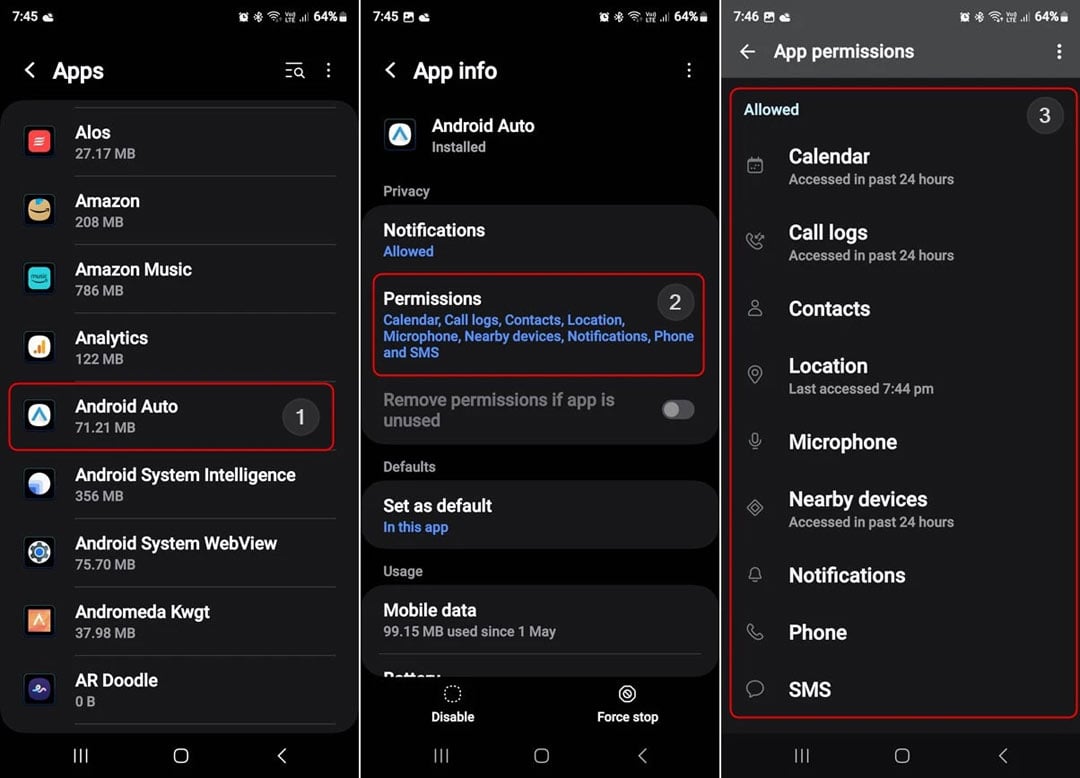Android Auto is the safest way to stay connected and entertained while driving. It helps drivers enjoy playlists, listen to podcasts, make and end calls, view and reply to messages, get real-time weather and traffic alerts, and use voice-guided navigation. Android Auto makes driving less distracting. However, compatibility issues, an outdated app version, or a recent software update might disrupt connectivity. This article explains why your Android Auto is not connecting wirelessly or via a USB cable and how to fix the problem.
Reasons Why Android Auto is Not Working
Android apps might throw errors for various reasons. Common Android Auto problems include connectivity issues, app crashes, unresponsive touchscreens, audio playback problems, and voice command malfunctions. Thankfully, troubleshooting and fixing Android Auto errors is easier than one might think.
If the Android Auto app is not connecting to your car wirelessly or via USB, it could be due to the following reasons.
- The USB cable is faulty.
- The device is not paired to your car’s head unit via Bluetooth.
- Android Auto doesn’t have the required permissions.
- Corrupt app cache and data.
- Your Android Auto app or phone’s software is outdated.
- Your old car model might have limited support for the latest Android version.
- Wireless Android Auto incompatibility with your phone or car’s infotainment system.
Fixing Android Auto Not Connecting Issues
My Samsung Galaxy S24 Ultra came with Android 14 (One UI 6.1) out of the box. While the UConnect system on my Jeep Compass connected to my S23 Ultra flawlessly, the S24 started intermittently disconnecting from Android Auto.
Try the following troubleshooting steps to fix the Android Auto not working issues. What worked for me should work for you too.
1. Restart Android Auto
Sometimes, Android Auto may stop working because of an unknown temporary glitch. In such cases, a simple restart should fix the connectivity problem. Once paired, Android Auto automatically connects when your car’s screen turns on. To restart Android Auto, do the following.
- Press your car’s engine stop button and ensure your car’s infotainment system is turned off.
- Now reboot your Android phone.
- When your device boots up, start your car.
The Android Auto connectivity issue should be fixed. If it still fails to connect, head to the next method.
2. Turn off Bluetooth and Disable Android Auto
Another way to fix temporary glitches with Android Auto is to toggle Bluetooth on your Android device and Android Auto in your car’s infotainment system.
- Swipe down the status bar on your phone and tap the Bluetooth toggle to turn it off.
- Wait for a few seconds and enable it again.
- Also, open the device manager or connection settings in your car’s system.
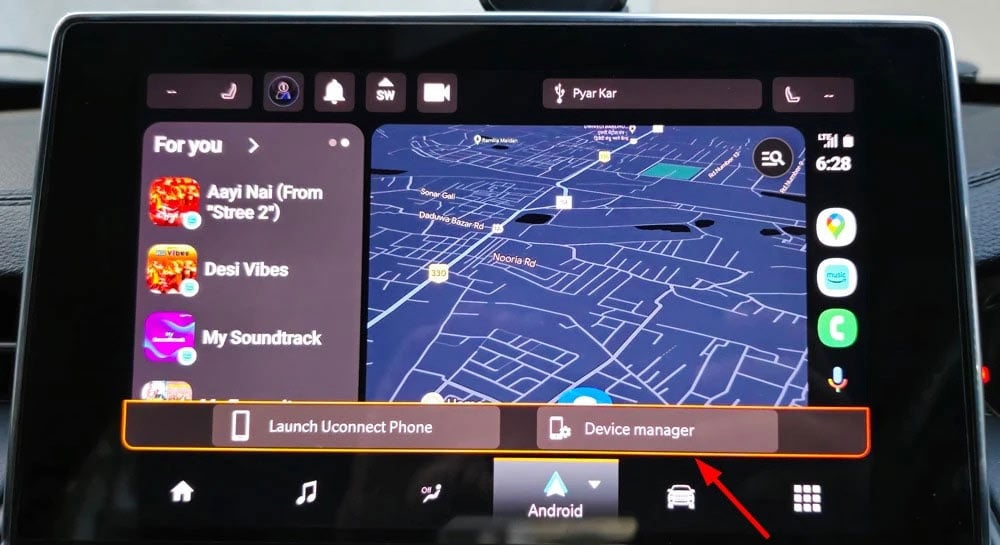
- Then disable Android Auto temporarily and re-enable.
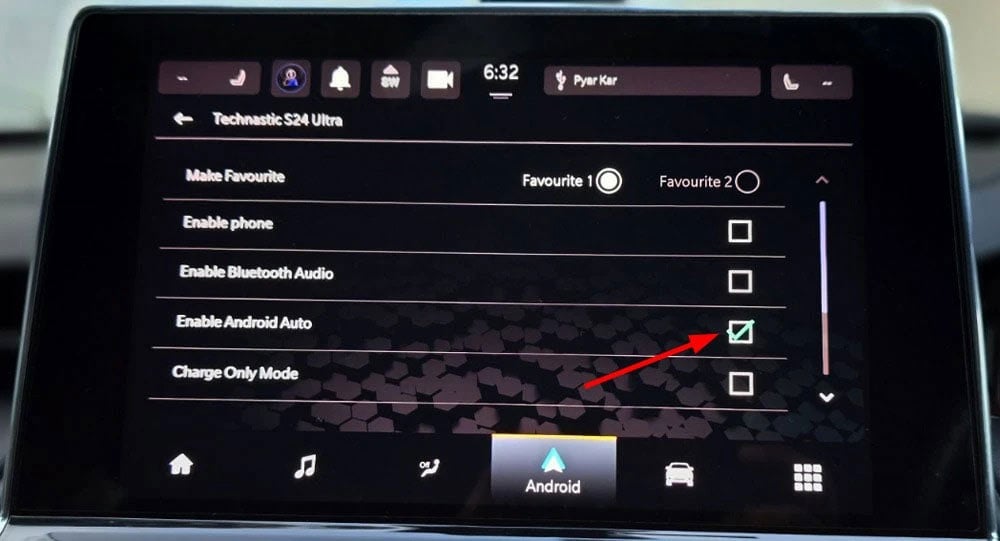
This should fix temporary connectivity issues with Android Auto.
3. Reset Wi-Fi and Bluetooth Settings on your Device
If Android Auto doesn’t connect via Bluetooth, consider resetting Bluetooth and Wi-Fi settings on your Android device and starting afresh. This will erase all Wi-Fi networks and paired Bluetooth devices, but it might be necessary to refresh your connection settings completely.
- Open phone Settings and go to General Management > Reset.
- Select the Reset Wi-Fi and Bluetooth Settings option.
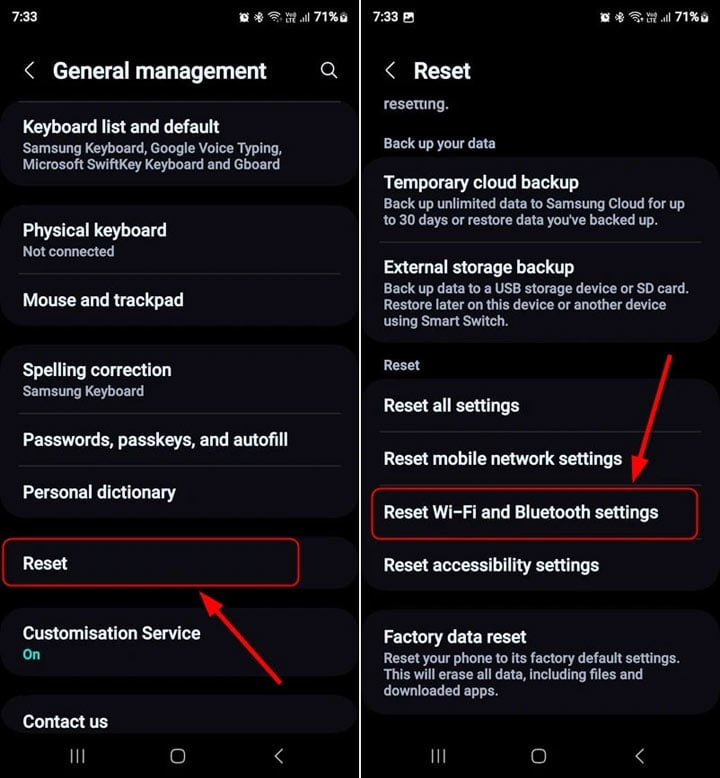
On some Android phones, you’ll find the option to reset network settings by navigating to Settings > System > Advanced > Reset options > Reset Wi-Fi & Bluetooth.
4. Check Android Auto Compatibility
If your car doesn’t support wireless Android Auto specifically, it won’t connect, no matter what troubleshooting steps you take. Wireless Android Auto requires a smartphone with Android 11.0 or higher, though some Google and Samsung phones can support it on earlier versions. Ensure that your device falls into this category otherwise, you’ll need an upgrade. If your phone is rooted or running a custom ROM, this too can impact how it interacts with your car’s system.
To check if your car’s specific make and model supports Android Auto, head to the official Android Auto compatibility page and click your car’s manufacturer. If you’ve installed an after-market stereo system, check the Stereos section on the page.
5. Check Your Connection
Once compatibility is confirmed, examine your USB cable. If Android Auto is not connecting to your car via USB, it may be due to a fault with your cable itself. A faulty or non-compatible cable is often the culprit behind connection issues. It can also cause lag and latency in Android Auto. Try using a different cable to see if the problem persists. Additionally, the USB port in your vehicle could be the source of the trouble, so inspect it for any signs of damage or try another port if available.
If you’re having issues connecting Android Auto to your car wirelessly, do the following to fix the connectivity issues.
- First, ensure that Bluetooth is enabled.
- Open your phone’s Settings and navigate to Connections > Bluetooth.
- Tap the Gear icon next to your car’s infotainment system name, and select the Unpair option.
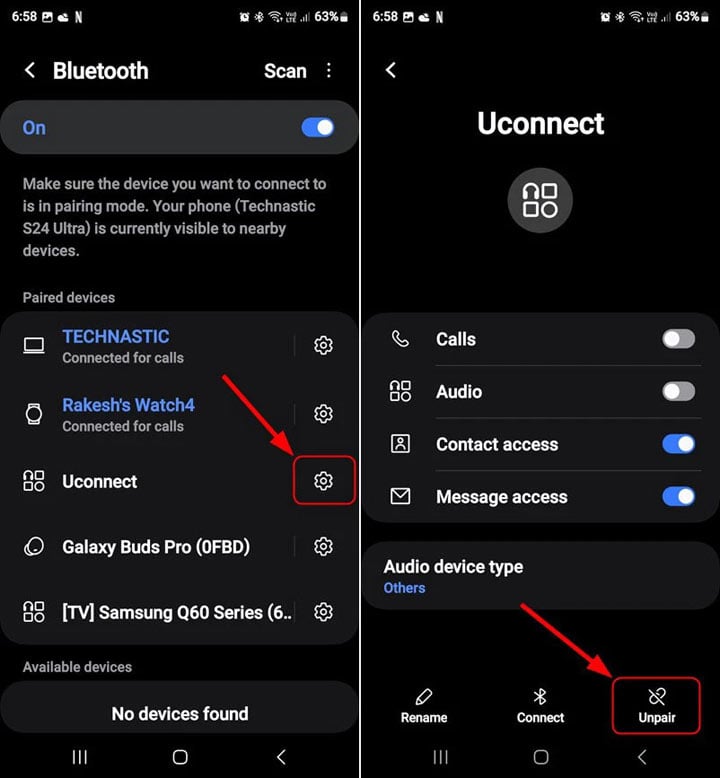
- Now, start your car and navigate to the connection settings in your car’s head unit. Initiate Android Auto connection and select your phone. Pair your phone with your car.
Now, do the following to pair your phone with your car to use Android Auto wirelessly and ensure it doesn’t disconnect again automatically.
- Start your car and navigate to Connected Devices > Android Auto in your phone Settings.
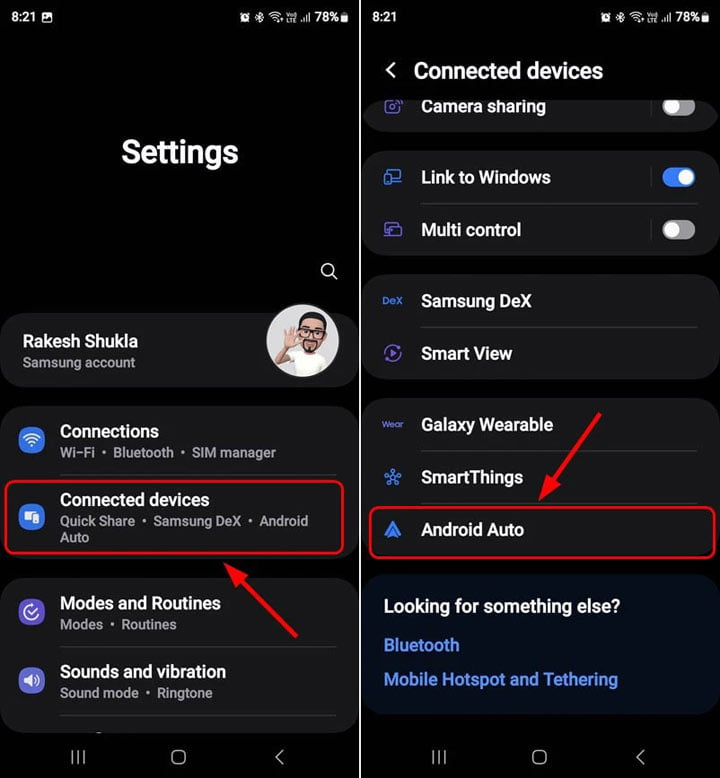
- Tap the Connect a Car button in the Android Auto app.
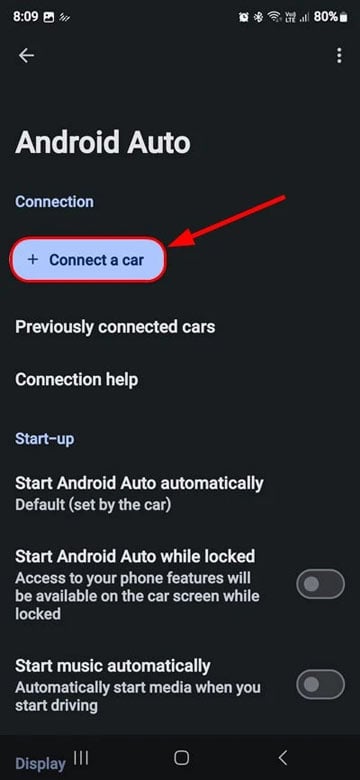
- Go through the connection setup and pair your car to connect to Android Auto.
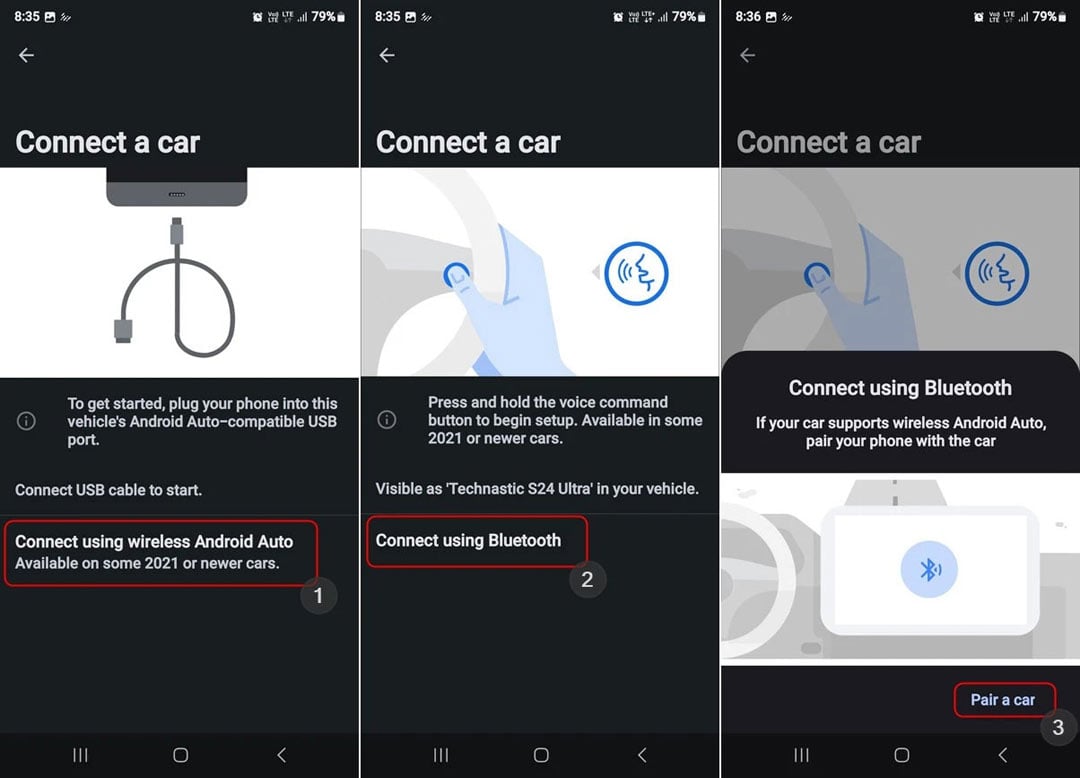
- Follow the rest of the process on your car’s infotainment system screen.
- When Android Auto is connected, open the app on your phone.
- Tap the Start Android Auto Automatically option and select Always.
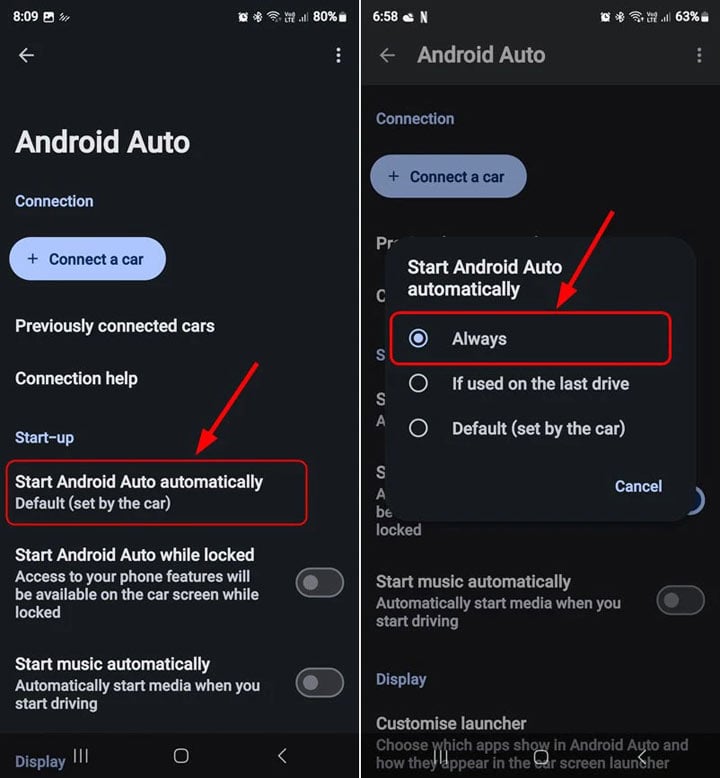
- Now tap the toggle next to Start Android Auto While Locked to enable the option.
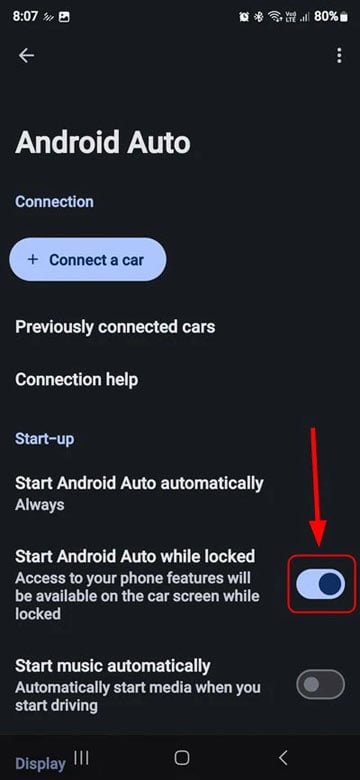
- If you still can’t connect to Android Auto wirelessly, open the Developer Settings in the app and enable the Wireless Android Auto option.
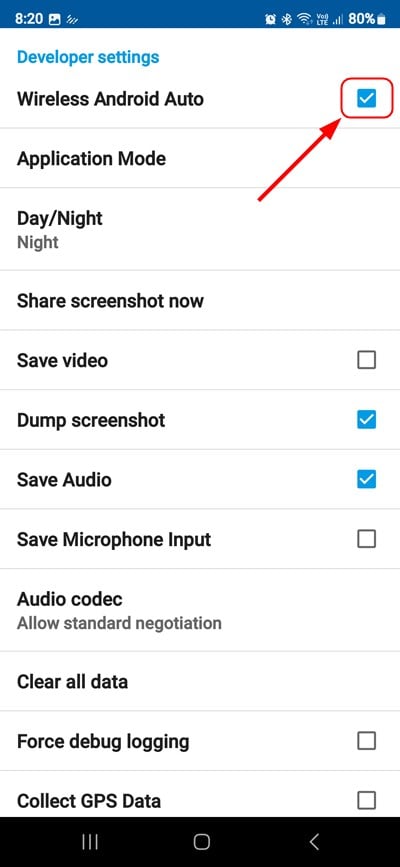
6. Update Your Phone and Android Auto
OEMs and developers frequently release updates that address bugs, enhance stability, and introduce new features. Keeping your phone’s OS and apps updated to the latest version is a good practice to avoid software-related problems. Sometimes, a firmware update may render Android Auto useless. If Android Auto is not working in your car after a software update, do the following.
To update your phone’s software to the latest version, open Settings > About Phone > Software Update > Download and Install.
Now, update Android Auto or install a fresh copy of the app.
- Open the Google Play Store and find Android Auto.
- If the Update option is available, tap it.
- Otherwise, select the Uninstall option and confirm the uninstallation.
- Finally, tap the Update option.
The Android Auto not connecting issue should be fixed. If it doesn’t, you might be missing something else.
7. Check App Permissions
Android Auto operates by integrating your smartphone with your car’s infotainment system. The app requires Android permissions like Phone, SMS, Call logs, Microphone, and Contacts to make and receive calls, view and reply to messages, and use voice commands. Similarly, location services must be enabled so that navigation apps can provide accurate directions based on real-time GPS data. Also, you should grant Storage permission to use downloaded maps or offline playlists.
To manage app permissions for Android Auto, do the following.
- Navigate to Settings > Apps on your phone.
- Open Android Auto and tap Permissions.
- Grant all essential permissions to Android Auto.
Try using Android Auto to check if it works now.
8. Clear App Cache and Data
If the above tips didn’t help you connect Android to your car, the problem may lie in the app data. Clearing the existing app cache and data can help resolve any temporary issues causing Android Auto to malfunction.
- Android Auto
- Google Maps
- Google Play Services
For example, resetting the Google Play Services can solve the issue if Android Auto doesn’t update automatically or app data is corrupt. Similarly, if you’re having problems with Google Maps in Android Auto, you should clear the app cache and data.
- Navigate to your phone’s Settings > Apps.
- Locate Android Auto and open it.
- Tap Storage and clear the app cache. If that doesn’t help, try clearing the data too.
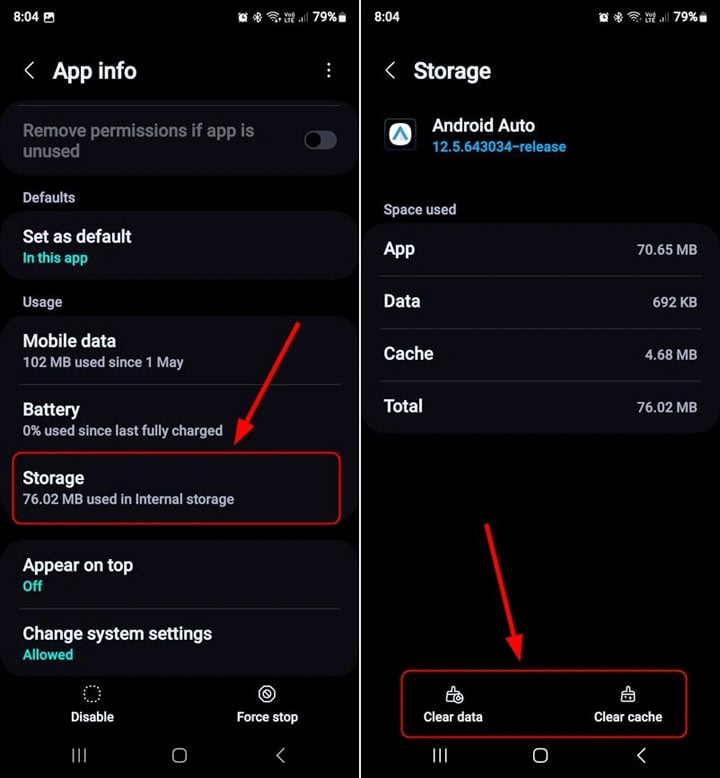
9. Reset Your Car’s Infotainment System
If the above steps don’t solve the Android Auto connectivity issues, consider resetting your car’s infotainment system. Depending on the brand of your car or stereo system, the steps to reset settings may differ.
- Start your car and tap the Settings or Vehicle icon.
- Find the option to Reset the system.
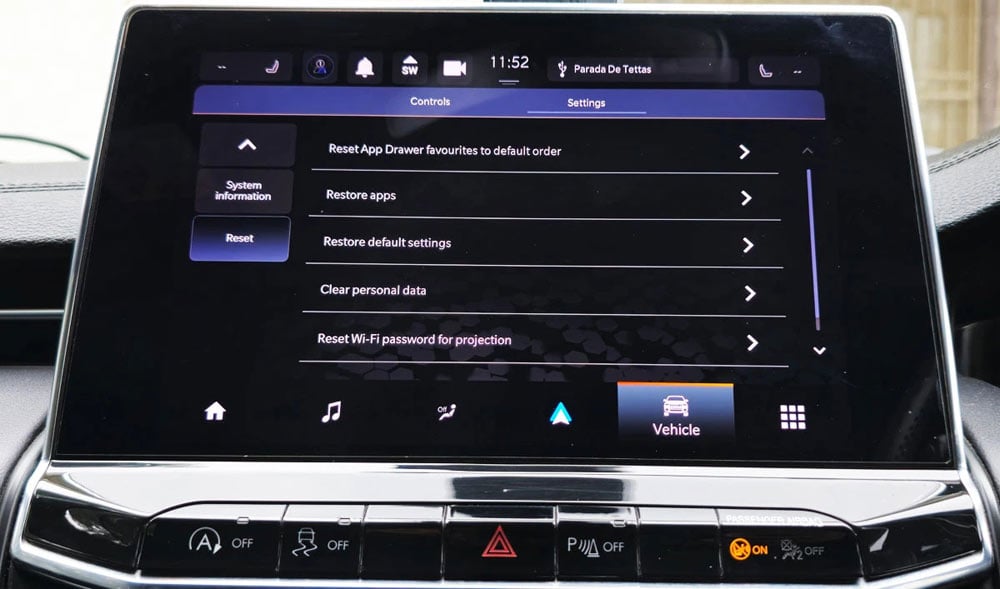
- Select the option to Reset Default Settings and confirm your choice.

When the reset is done, try connecting your car to Android Auto.
Staying connected on the road while driving is important. I hope this tutorial helped you fix the connectivity issues with Android Auto. Stay connected, stay entertained, and drive safely!
Read Next: How to Take Screenshots in Android Auto
